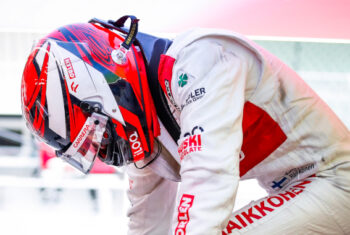
Race Suit Buying Guide: Everything You Need to Know
Grand Prix Racewear Race Suit Buying Guide
Purchasing a race suit is one of the most important investments you can make as a motorsport enthusiast, whether you’re involved in karting, club racing, or professional competition. At Grand Prix Racewear (GPR), we understand that finding the right race suit can be overwhelming, given the variety of brands, styles, and specifications. This comprehensive guide will walk you through every aspect you need to consider to ensure you select the perfect race suit for your needs.
1. Understanding Race Suit Regulations
Before purchasing a race suit, it’s crucial to ensure it meets the safety requirements set by the governing body of your racing discipline. Different forms of motorsport have varying requirements, but the two most common certifications you’ll come across are:
- FIA 8856-2018: This is the current FIA standard for fireproof race suits, required for most forms of professional car racing (including F1, GT racing, rallying, etc.).
- SFI 3.2A: Predominantly used in the US and associated with drag racing and other forms of motorsport. SFI-rated suits come with a thermal protection performance (TPP) rating that indicates how long the suit will protect you in a fire.
- CIK-FIA Level 2: This standard applies specifically to karting. While karting suits don’t have the same fire resistance as car race suits, they offer abrasion protection and flexibility.
Tip: Always check the rulebook of your racing category to confirm which certification is required for your suit.
2. Fire Resistance and Protection
For car racing, fire resistance is a key factor. Race suits are made from materials like Nomex, which is inherently flame-resistant. Depending on the certification, a suit will offer varying levels of protection in the event of a fire.
Layers:
Race suits come in single-layer, double-layer, and triple-layer designs, with more layers providing additional protection. Here’s what you need to know:
- Single-Layer Suits: Ideal for entry-level or lower-tier racing, single-layer suits provide basic fire resistance. They are lightweight and generally more affordable.
- Multi-Layer Suits: Suits with two or three layers offer more protection, giving drivers additional seconds before heat penetration in case of a fire. These are commonly required for higher levels of racing. However, they can be heavier and hotter to wear.
Tip: If you’re racing in hot climates, look for a suit with breathable material or ventilation zones that help with heat dissipation while maintaining protection.
3. Suit Fit and Comfort
A well-fitting race suit is crucial not only for comfort but also for safety. Here’s what to consider:
3.1. Sizing
Race suits come in various sizes, typically ranging from XS to XXXL. It’s essential to check each brand’s sizing chart, as fits can vary. Your suit should be snug but not too tight, allowing freedom of movement while still offering maximum protection.
- Too Loose: A baggy suit may cause bunching when seated, which can lead to discomfort and even hazards during racing.
- Too Tight: Restricts movement and can reduce comfort, especially in hot conditions. Plus, tight suits can tear more easily under stress.
3.2. Tailored vs. Off-the-Shelf
- Off-the-Shelf Suits: These suits are pre-sized and readily available, making them a convenient option for most racers. They’re typically less expensive than custom suits.
- Tailored Suits: For those who need a perfect fit or have specific requirements, custom-tailored suits are the way to go. Brands like Sparco and Alpinestars offer custom fitting services, allowing you to tailor the suit to your exact body measurements.
3.3. Comfort Features
- Stretch Panels: Many suits now feature elasticated panels (often around the lower back, shoulders, and knees) that allow for better mobility.
- Ventilation: If you’re racing in a hot climate, look for suits with breathable fabric or perforated panels to help with airflow.
- Knit Cuffs: These provide a tight yet comfortable fit around the wrists and ankles, preventing unwanted movement of the suit.
Tip: Try on the suit in a racing position (seated, arms extended) to ensure that it doesn’t feel restrictive.
4. Durability and Maintenance
Race suits are subjected to a lot of wear and tear, especially in endurance racing. Look for suits made with durable materials that can withstand repeated use and washing. High-end materials like Nomex or Aramid fibers tend to last longer than cheaper alternatives.
4.2. Washing and Care Instructions
Always follow the manufacturer’s guidelines for cleaning your suit. Typically, race suits should be hand-washed or machine-washed on a delicate cycle using mild detergent. Avoid bleach and harsh chemicals, which can degrade the fireproof properties of the fabric.
- Air Drying: Never tumble dry a fireproof suit. Always air dry, away from direct sunlight or heat sources, as this can damage the fabric.
- Storage: Store your suit in a cool, dry place, preferably in a suit bag, to protect it from dirt and UV damage.
Tip: Regularly inspect your suit for signs of wear, especially around high-stress areas like the shoulders, elbows, and knees.
5. Additional Features to Consider
5.1. Pockets
Some suits come with pockets, which can be handy for holding small items (earplugs, a balaclava, etc.) when you’re walking around the paddock. However, be mindful that pockets add extra layers, which can reduce breathability.
5.2. Epaulettes
Many suits feature epaulettes (straps on the shoulders) that are required in certain forms of racing to assist in the extraction of a driver from the car.
5.3. Custom Branding
If you’re racing professionally or semi-professionally, consider adding custom logos or sponsor patches to your suit. Some brands offer this as an option at the time of purchase, or you can have it done later by a professional tailor.
Tip: Make sure any alterations or additions to your suit (such as embroidered logos) are done without compromising its fireproof properties.
6. Top Race Suit Brands Available at GPR
At Grand Prix Racewear, we offer a wide selection of race suits from industry-leading brands, each with unique features and benefits. Here are some of the top brands you’ll find:
6.1. Sparco
- Sparco is known for its cutting-edge technology and innovative design. They offer a wide range of suits, from entry-level to professional-grade FIA-approved suits.
- Features: Stretch panels, lightweight fabrics, breathable designs, customizable options.
6.2. OMP
- OMP provides some of the lightest and most durable race suits in the market. Their suits often feature a minimalist design but come with advanced fire-resistant properties.
- Features: Multi-layer construction, advanced moisture-wicking technology, excellent comfort.
6.3. Alpinestars
- Alpinestars offers high-performance suits that balance comfort, fire protection, and durability. They are a popular choice among professional drivers.
- Features: Pre-curved arms for better fit, anatomical design, enhanced heat and moisture management.
6.4. FIA Karting Suits
For karting enthusiasts, we offer FIA-approved Level 2 suits from brands like Sparco, OMP, and Alpinestars. These suits focus on abrasion resistance, breathability, and freedom of movement
7. Race Suit Accessories
To complete your racewear ensemble, you’ll also need to consider the following accessories:
7.1. Fireproof Underwear
- Many forms of motorsport require you to wear fireproof underwear underneath your race suit. This includes long-sleeved tops, bottoms, and socks, made from the same fire-resistant materials as your suit.
7.2. Gloves and Boots
- Fireproof gloves and boots are essential for FIA-certified races. Look for models that offer a good balance between comfort, heat resistance, and grip.
7.3. Balaclava
- A fireproof balaclava protects your head and neck in the event of a fire. Balaclavas come in different thicknesses, so choose one based on your comfort preference and temperature conditions.
8. Budget Considerations
Race suits range in price depending on brand, materials, and certification level. Here’s a general breakdown:
- Entry-Level Suits: £250 – £500. These suits are typically single-layer or lighter-weight multi-layer suits, ideal for amateur racers.
- Mid-Range Suits: £500 – £1,000. Suits in this range offer additional protection, comfort, and features like stretch panels and moisture-wicking fabric.
- High-End Suits: £1,000+. These suits are often custom-fitted and made from the most advanced materials, offering the highest levels of protection and comfort.
Tip: If you’re just starting out, consider an entry-level suit and invest in additional safety gear as you progress in the sport.
9. Where to Buy
At Grand Prix Racewear, we stock a wide variety of race suits to suit all levels of motorsport, from beginner karting to professional circuit racing. Visit our showroom or browse our online store to find your perfect suit.
Final Thoughts
A race suit is an essential part of your safety gear, so take the time to choose one that fits your racing discipline, offers the right level of protection, and keeps you comfortable on the track. At Grand Prix Racewear, we are here to help you make an informed decision. Whether you’re just starting out or an experienced racer looking to upgrade, we’ve got you covered.
Race Wear at Grand Prix Racewear
GPR does not claim the copyright to all images used in this blog. When copyright is unknown, we have not been able to seek permission for image use and will remove immediately any infringing content upon request.



























































